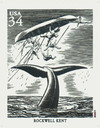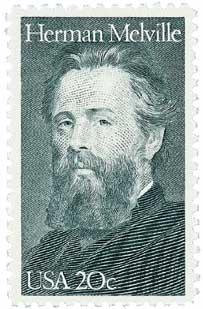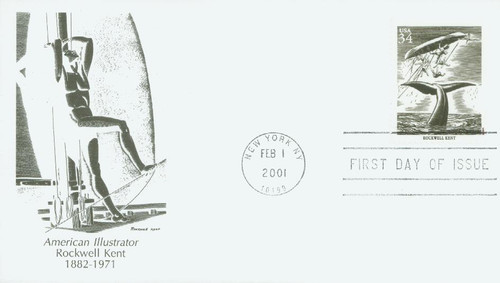
# 3502q - 2001 34c American Illustrator R. Kent
Rockwell Kent
34¢ American Illustrators
City: New York, NY
Quantity: 125,000,000
Printed by: Avery Dennison Security Printing
Printing Method: Photogravure
Perforations: Serpentine die cut 11.25
Color: Multicolored
Death Of Herman Melville
Herman Melville was born on August 1, 1819, in New York City. His father was an unsuccessful merchant who died suddenly when Melville was a child, forcing him and his siblings to work in the family’s fur business. Melville also held a variety of odd jobs – teaching, working on his uncle’s farm, and as a cashier in a local bank.
Though he had dropped out of school to work, Melville spent much of his free time reading. He loved mythology, anthropology, and history. And he loved hearing the story of the whaleship Essex, which was sunk by a whale when he was a year old. He developed an early fascination with whales and the whalers who hunted them.
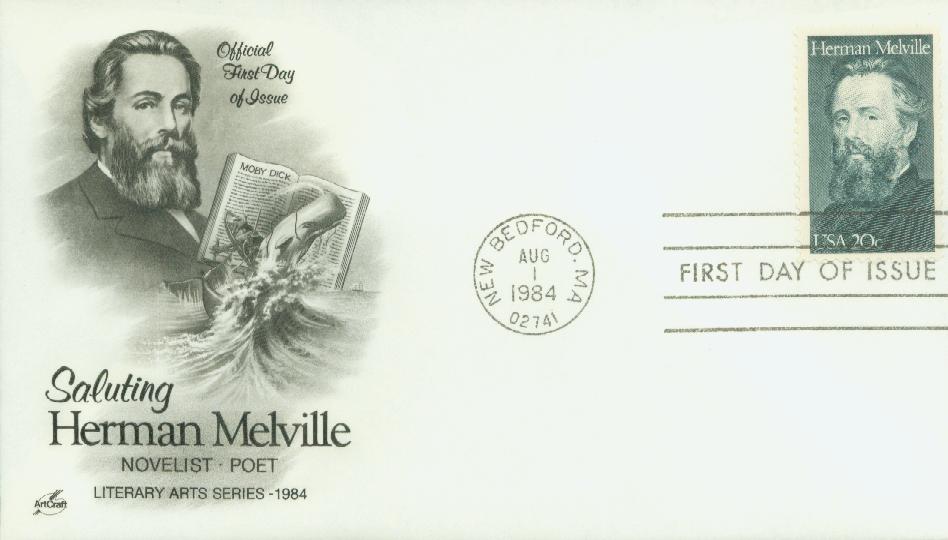
When he was 20, he traveled across the Atlantic for the first time as a cabin boy aboard the St. Lawrence. He then spent a year and a half on the whaling ship Acushnet, followed by several months on other ships, a brief stint in jail (for mutiny), and finally, the US Navy, which brought him back to America. The adventures he had during those three years would provide him with ample inspiration for his first few novels.
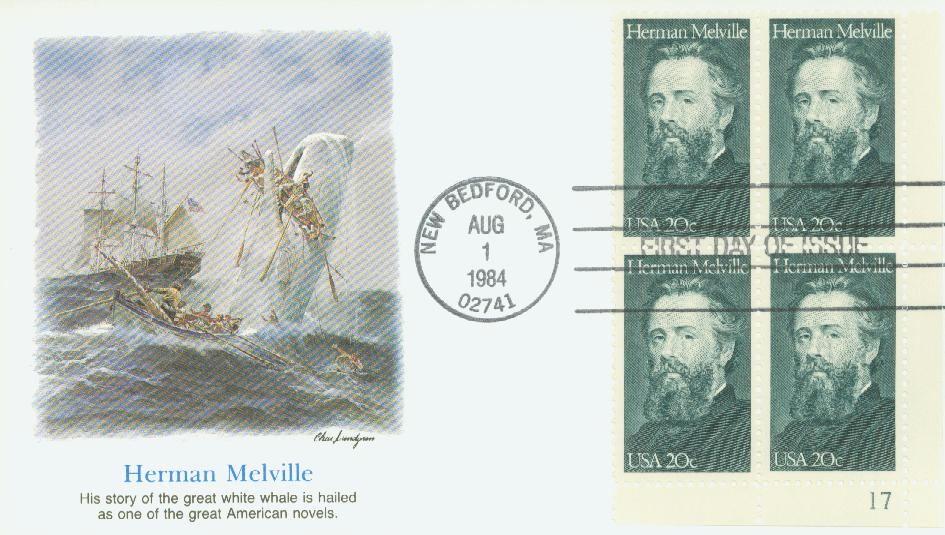
Melville published his first novel, Typee, in 1846. The book was a success and spurred a sequel. Melville wrote another three relatively successful books before he was inspired to write Moby-Dick.
Melville realized that no books up to that time showed the excitement of the whaling industry as he had experienced it. The sinking of the Nantucket whaleship Essex and the alleged killing of the albino sperm whale, Mocha Dick, in the 1830s, further inspired him. Mocha reportedly had countless scars from harpoons and attacked over 100 ships.
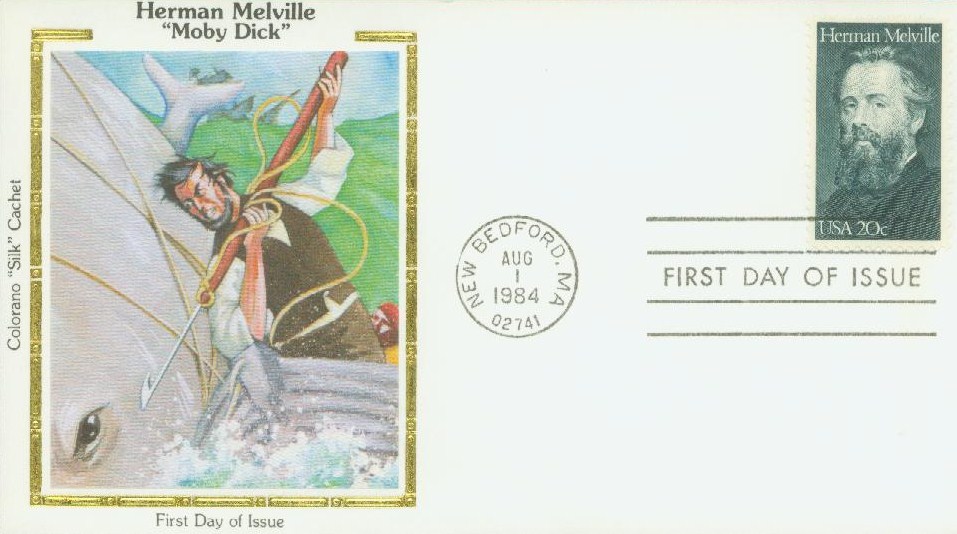
The writing process took Melville about a year and a half. It’s been suggested he composed the book in two or three stages, rewriting much of the book to make it “an epic of cosmic proportions.” The book was first published in London, on October 18, 1851, as The Whale. British editors made hundreds of revisions that didn’t appear in the American publication.
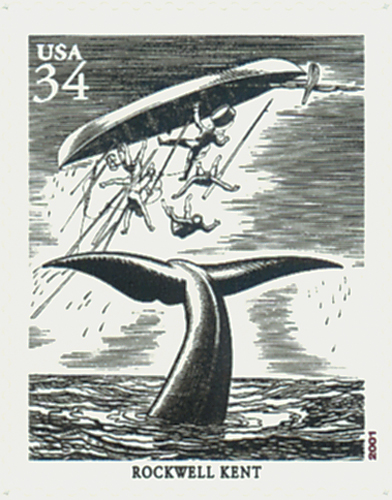
By November 14, 1851, when Harper Brothers published the book in America, Melville changed the title to Moby-Dick. Critics and readers of the time misunderstood it. Melville used stylized language, symbolism, and metaphor to address several complicated themes such as class, social status, good and evil, and the existence of gods. The story also darkly dealt with obsession, religion, and idealism versus pragmatism, revenge, sanity, hierarchical relationships, and politics. On several occasions, the main character, Ishmael, described different aspects of the whaling business in great detail.
Moby-Dick is often seen as the start of Melville’s literary descent. Though he continued writing for a time, it wasn’t making him enough money to pay his bills, so he got a job as a customs inspector. About 3,200 copies of the book were sold during Melville’s lifetime, earning him just $1,200. He died from a heart attack on September 28, 1891.
Rockwell Kent
34¢ American Illustrators
City: New York, NY
Quantity: 125,000,000
Printed by: Avery Dennison Security Printing
Printing Method: Photogravure
Perforations: Serpentine die cut 11.25
Color: Multicolored
Death Of Herman Melville
Herman Melville was born on August 1, 1819, in New York City. His father was an unsuccessful merchant who died suddenly when Melville was a child, forcing him and his siblings to work in the family’s fur business. Melville also held a variety of odd jobs – teaching, working on his uncle’s farm, and as a cashier in a local bank.
Though he had dropped out of school to work, Melville spent much of his free time reading. He loved mythology, anthropology, and history. And he loved hearing the story of the whaleship Essex, which was sunk by a whale when he was a year old. He developed an early fascination with whales and the whalers who hunted them.

When he was 20, he traveled across the Atlantic for the first time as a cabin boy aboard the St. Lawrence. He then spent a year and a half on the whaling ship Acushnet, followed by several months on other ships, a brief stint in jail (for mutiny), and finally, the US Navy, which brought him back to America. The adventures he had during those three years would provide him with ample inspiration for his first few novels.

Melville published his first novel, Typee, in 1846. The book was a success and spurred a sequel. Melville wrote another three relatively successful books before he was inspired to write Moby-Dick.
Melville realized that no books up to that time showed the excitement of the whaling industry as he had experienced it. The sinking of the Nantucket whaleship Essex and the alleged killing of the albino sperm whale, Mocha Dick, in the 1830s, further inspired him. Mocha reportedly had countless scars from harpoons and attacked over 100 ships.

The writing process took Melville about a year and a half. It’s been suggested he composed the book in two or three stages, rewriting much of the book to make it “an epic of cosmic proportions.” The book was first published in London, on October 18, 1851, as The Whale. British editors made hundreds of revisions that didn’t appear in the American publication.

By November 14, 1851, when Harper Brothers published the book in America, Melville changed the title to Moby-Dick. Critics and readers of the time misunderstood it. Melville used stylized language, symbolism, and metaphor to address several complicated themes such as class, social status, good and evil, and the existence of gods. The story also darkly dealt with obsession, religion, and idealism versus pragmatism, revenge, sanity, hierarchical relationships, and politics. On several occasions, the main character, Ishmael, described different aspects of the whaling business in great detail.
Moby-Dick is often seen as the start of Melville’s literary descent. Though he continued writing for a time, it wasn’t making him enough money to pay his bills, so he got a job as a customs inspector. About 3,200 copies of the book were sold during Melville’s lifetime, earning him just $1,200. He died from a heart attack on September 28, 1891.




